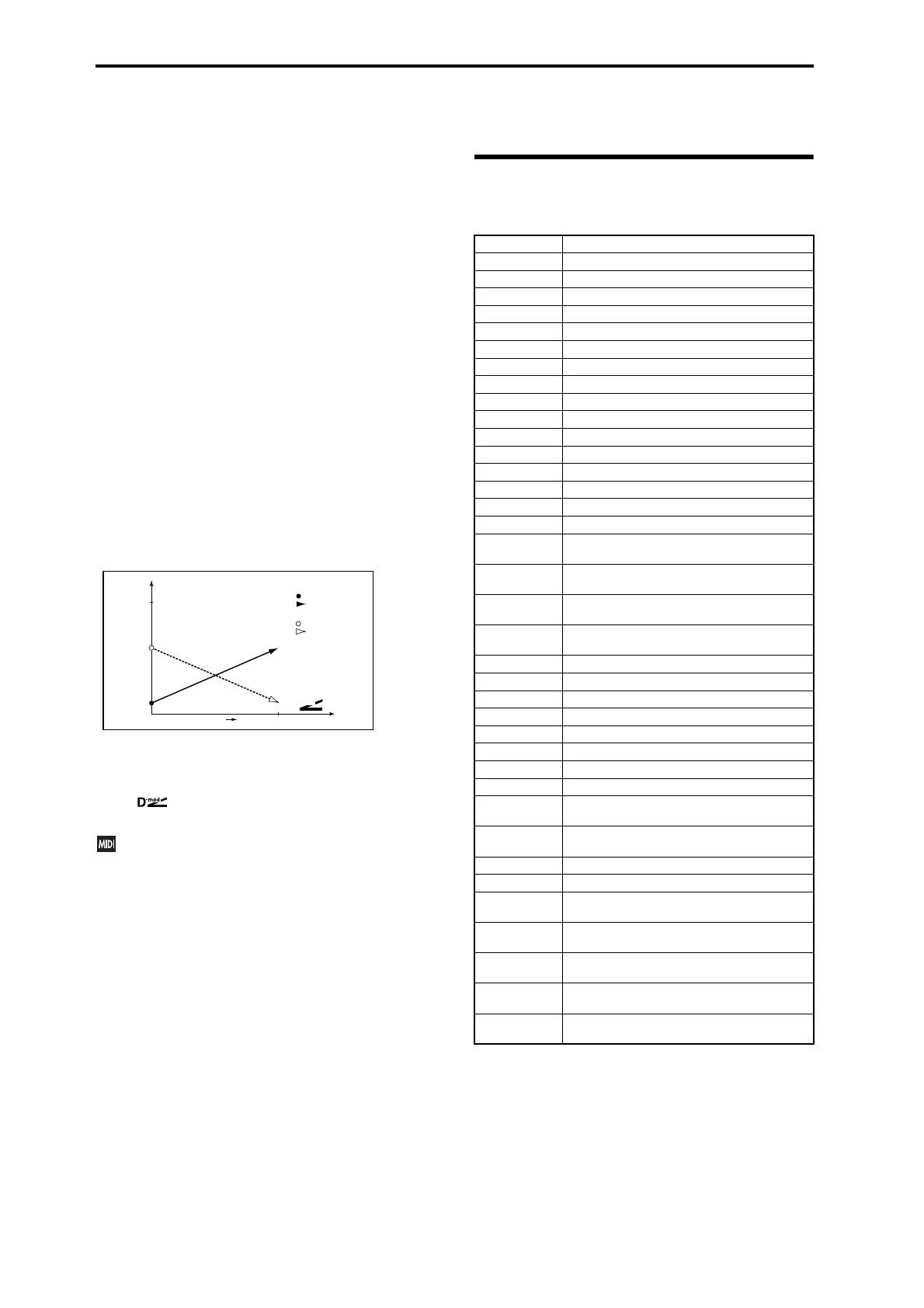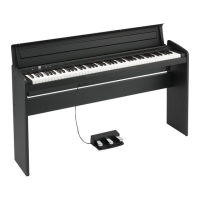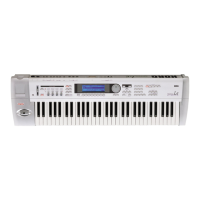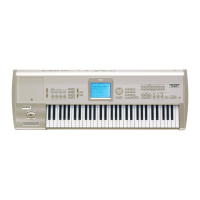Appendices
594
Dynamic Modulation Sources (Dmod)
You can control certain effect parameters using the joystick,
X–Y, ribbon controller, etc. “on the fly.”
These parameters can also be controlled by KARMA, the X–
Y control and EG, or the sequencer.
Controlling effects in this way is referred to as Dynamic
Modulation. For example, you can use After Touch to speed
up the LFO of the chorus and flanger, or you can use the
ribbon controller to sweep a wah effect. This lets you take
full advantage of the effects as part of the expressive
potential of your instrument.
Most of the parameters for dynamic modulation consist of
parameter values for Source and Amount. The Source field
selects the modulation source, and Amount sets the
modulation intensity. When the Source is at its maximum
value (for instance, when JS+Y is moved all the way up), the
actual degree of the effect will be the parameter value plus
the Amount.
For example, let’s say that Wet/Dry = 10:90, Source = After
Touch, and Amount = +50.
With no After Touch, the wet/dry balance is 10:90 (mostly
dry). As you apply After Touch, the balance will change to
include more of the effect sound, and less of the dry sound.
When After Touch is at its maximum, the wet/dry balance
will be 60:40 (more wet than dry).
See the individual effects descriptions for explanations of
other dynamic modulation parameters. Parameters which
can be controlled through dynamic modulation are marked
by the symbol.
Dmod and MIDI
In Program and Sampling modes, dynamic modulation
is always controlled via the global MIDI Channel.
In Combination and Sequencer modes, dynamic
modulation is controlled via the MIDI channel
independently specified by the “Ch” for IFX1–5, MFX1,
2, and TFX.
Dynamic Modulation Source
List
Wet / Dry
Max
Zero Higher
D
-mod
Dry
Wet
60:40
10:90
Dynamic Modulation (Example)
Wet / Dry=10:90
Amt= +50
Wet / Dry=60:40
Amt= –50
Offdynamic modulation is not used
Gate1 note on/off ☞p.595
Gate1+Dmpr note on + damper on/off ☞p.595
Gate2 note on/off (retrigger) ☞p.595
Gate2+Dmpr note on + damper on/off (retrigger) ☞p.595
Note Numbr note number
Velocity velocity
Exp Velocity exponential velocity ☞p.595
After Touch aftertouch (Channel After Touch)
JS X joystick X (horizontal) direction
JS+Y: #01 joystick +Y (Vertical upward) direction (CC#01)
JS–Y: #02 joystick –Y (Vertical downward) direction (CC#02)
Pedal: #04 assignable foot pedal (CC#04) ☞p.595
FXCtrl1: #12 MIDI effect control 1 (CC#12)
FXCtrl2: #13 MIDI effect control 2 (CC#13)
Ribbon: #16 ribbon controller (CC#16)
ValSldr: #18 value slider (CC#18) ☞p.595
SldrM5: #17
realtime control slider 5 (slider modulation 5
CC#17) ☞p.595
SldrM6: #19
realtime control slider 6 (slider modulation 6
CC#19) ☞p.595
SldrM7: #20
realtime control slider 7 (slider modulation 7
CC#20) ☞p.595
SldrM8: #21
realtime control slider 8 (slider modulation 8
CC#21) ☞p.595
SldrM5 [+] realtime control slider 5 [+] ☞p.595
SldrM6 [+] realtime control slider 6 [+] ☞p.595
SldrM7 [+] realtime control slider 7 [+] ☞p.595
SldrM8 [+] realtime control slider 8 [+] ☞p.595
Damper: #64 damper pedal (CC#64)
PrtaSW: #65 portamento switch (CC#65)
Sostenu: #66 sostenuto pedal (CC#66)
Soft: #67 soft pedal (CC#67)
SW 1: #80
assignable panel switch 1 (SW1 modulation CC#80)
☞p.597
SW 2: #81
assignable panel switch 2 (SW2 modulation CC#81)
☞p.597
FootSW: #82 assignable foot switch (CC#82) ☞p.598
MIDI: CC#83 MIDI Control Change (CC#83)
XY +X: #85
X–Y Mode +X (X–Y Mode modulation +X CC#85)
☞p.595
XY -X: #86
X–Y Mode –X (X–Y Mode modulation –X CC#86)
☞p.595
XY +Y: #87
X–Y Mode +Y (X–Y Mode modulation +Y CC#87)
☞p.595
XY -Y: #88
X–Y Mode –Y (X–Y Mode modulation –Y CC#88)
☞p.595
Tempo
tempo (internal clock or external MIDI clock tempo
data) ☞p.595

